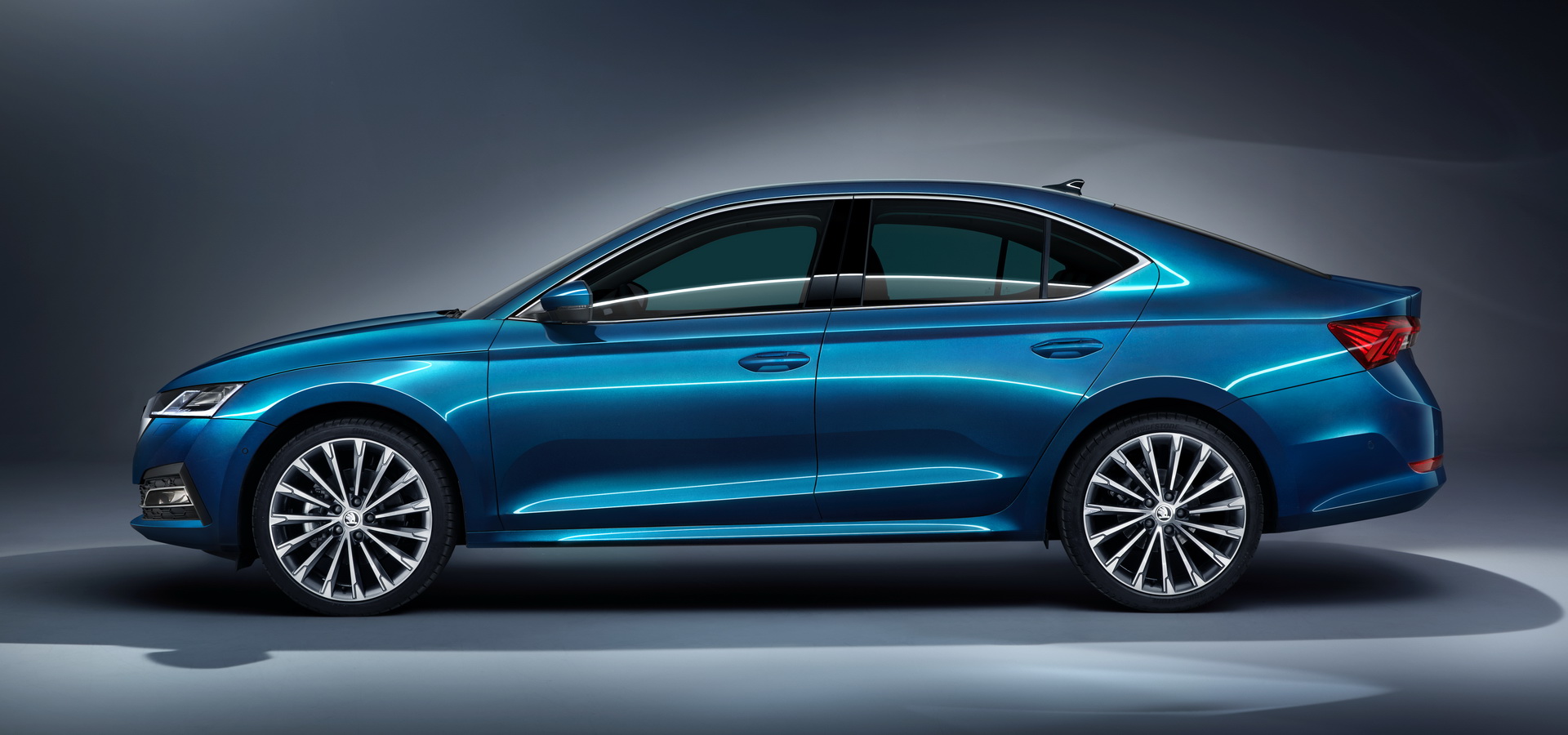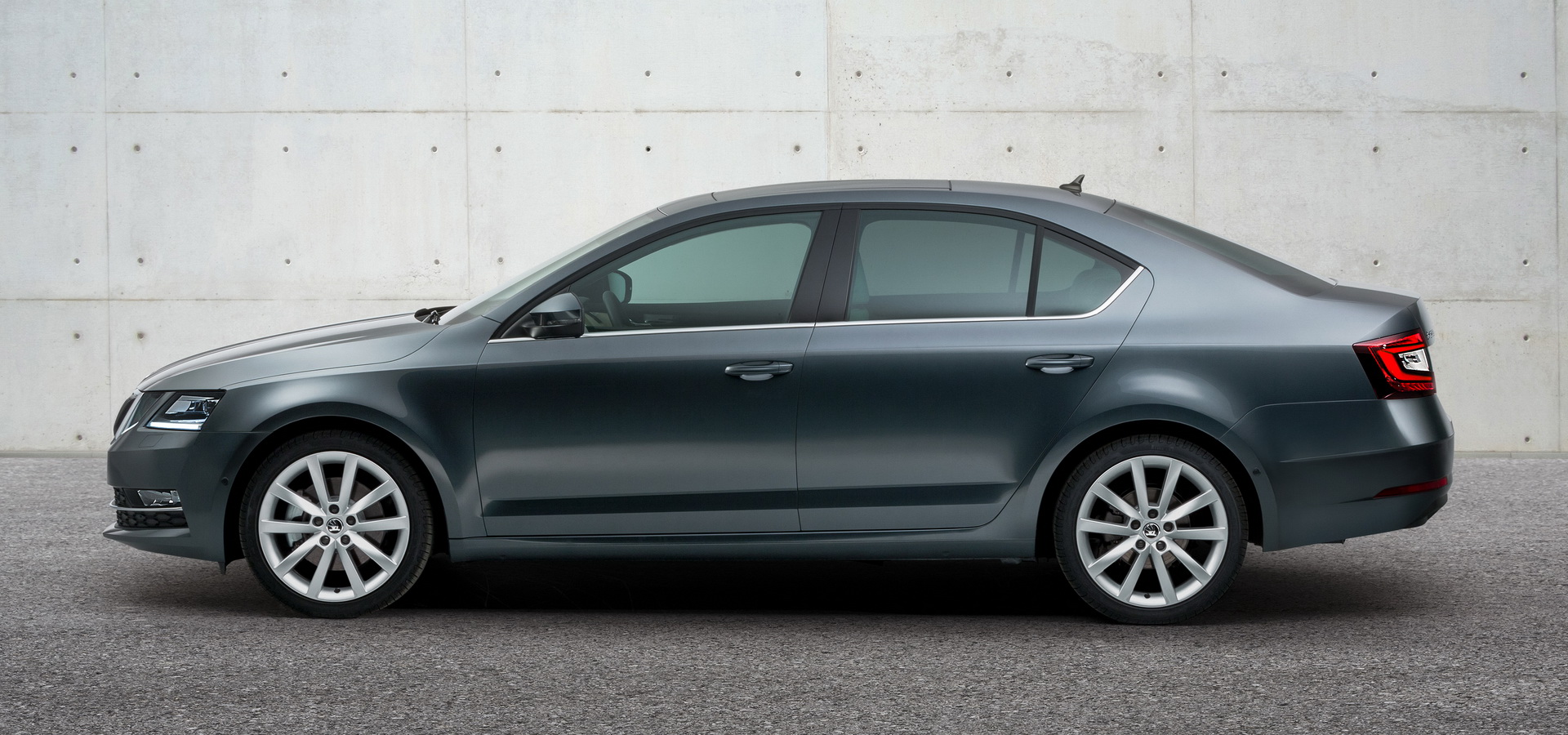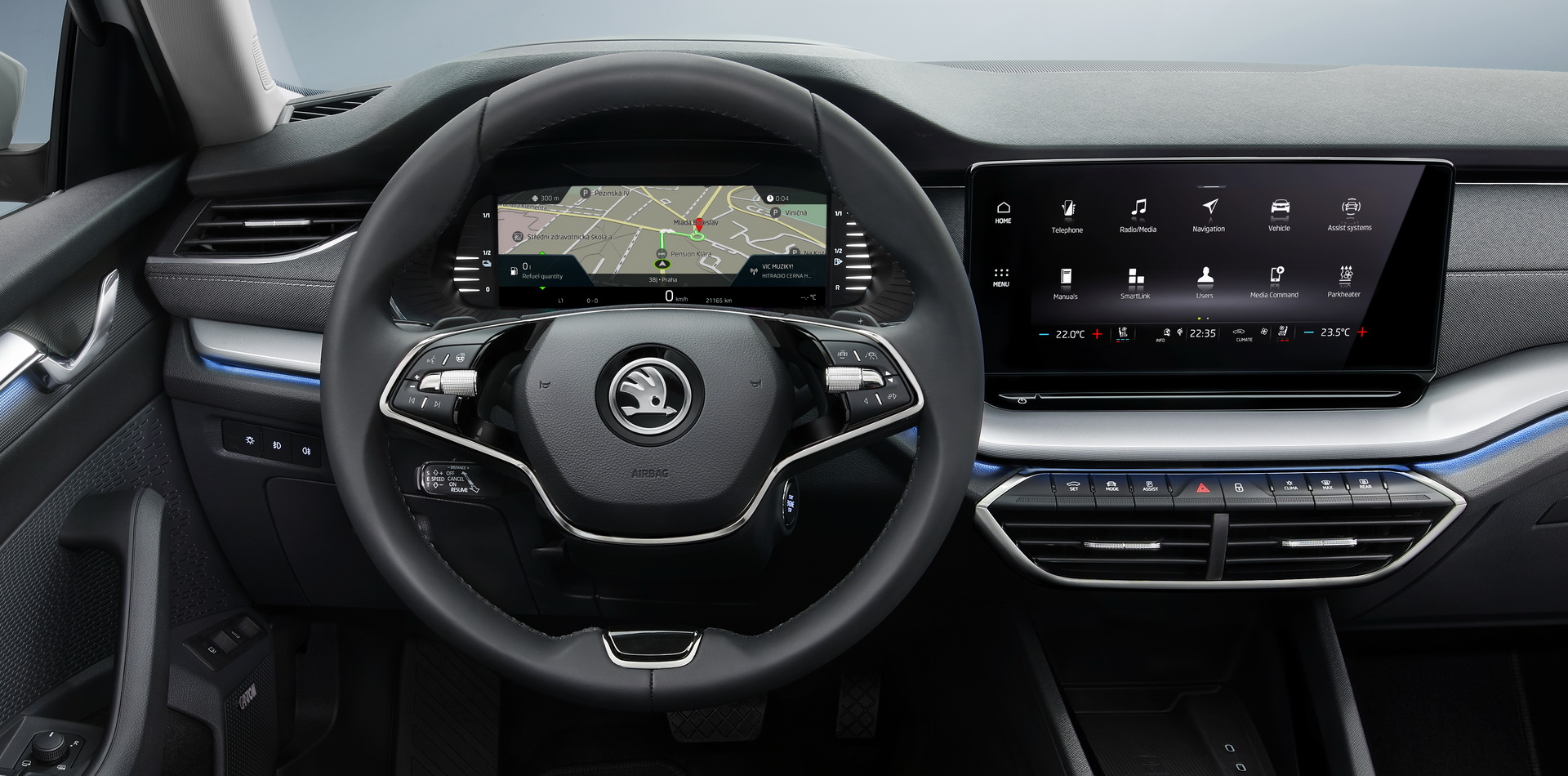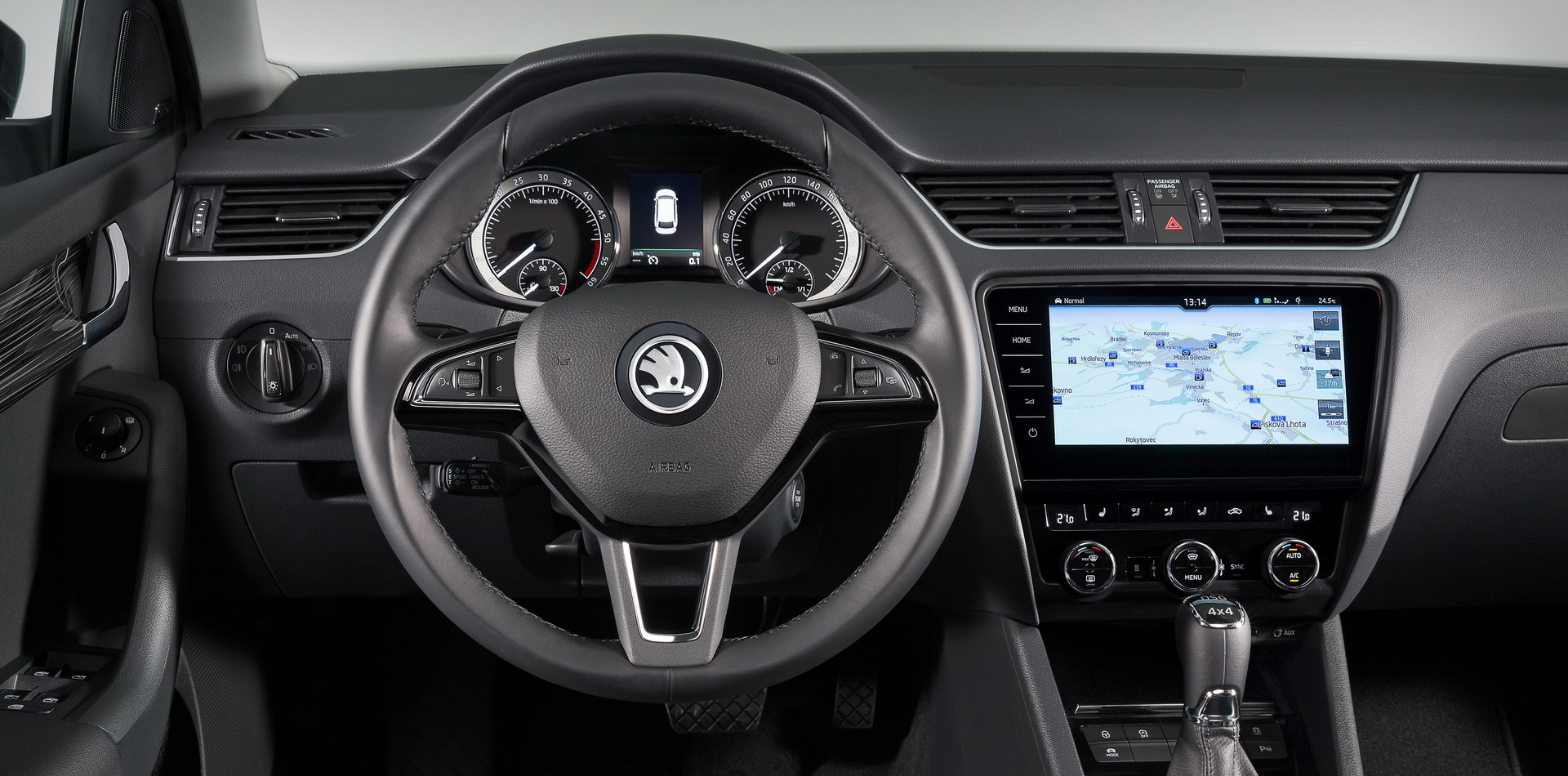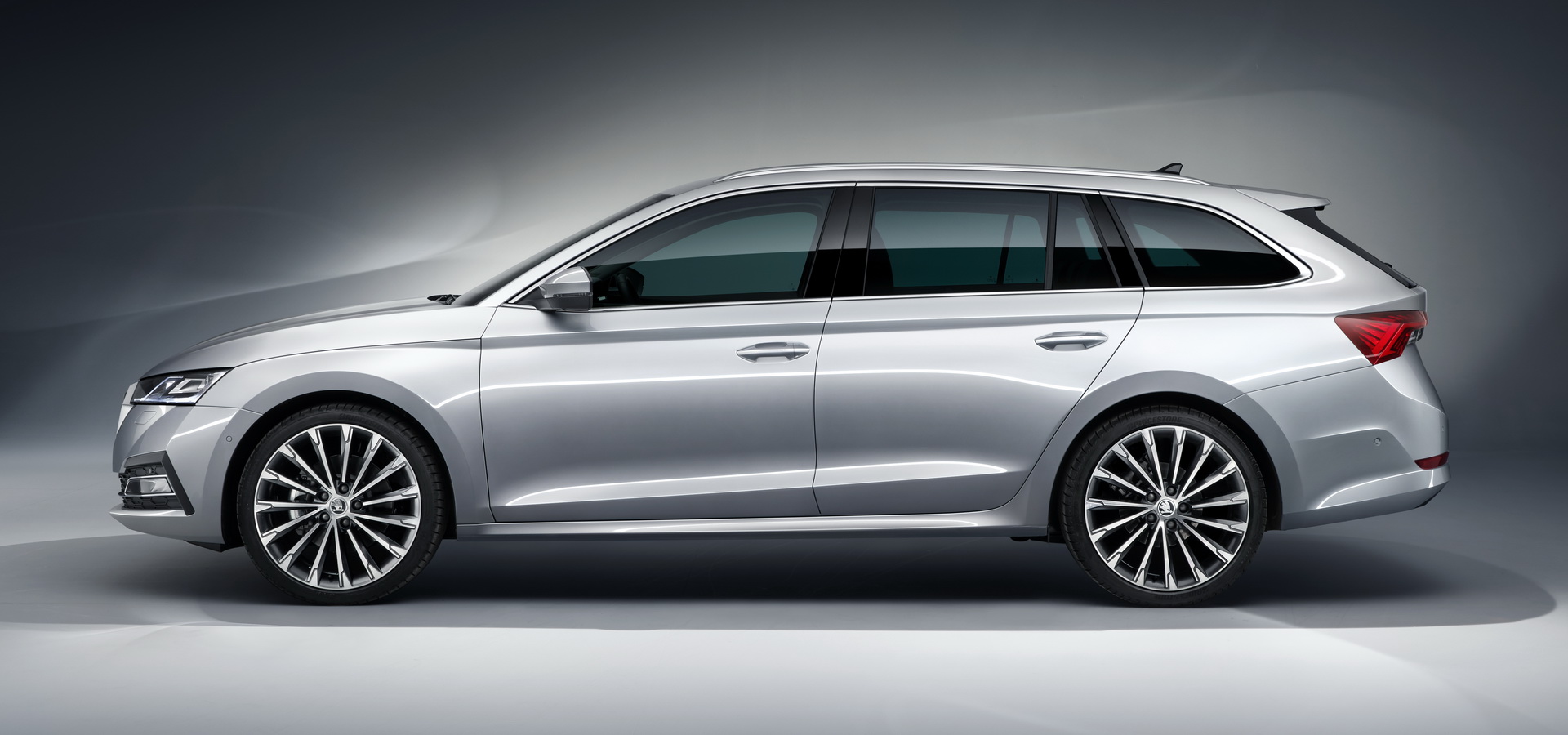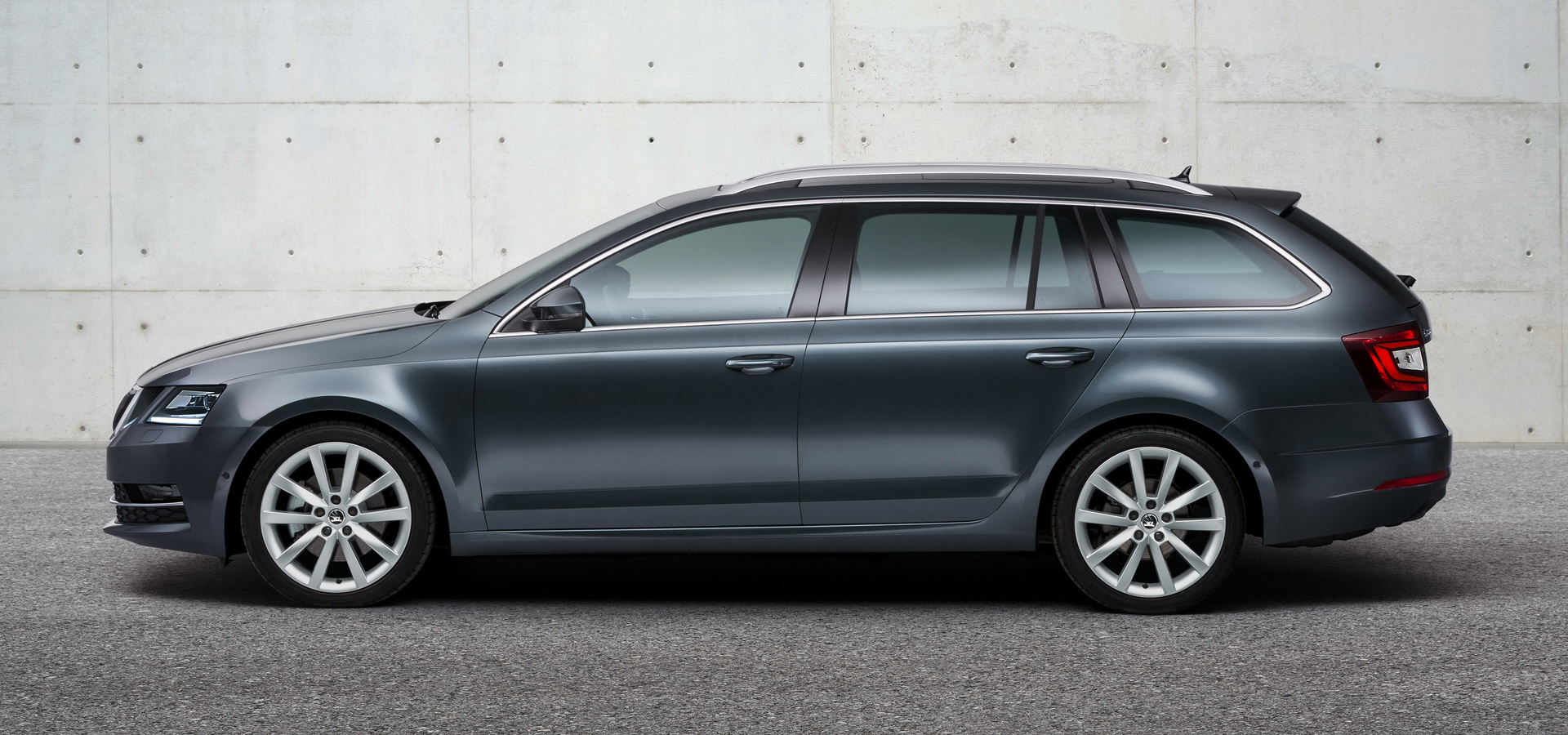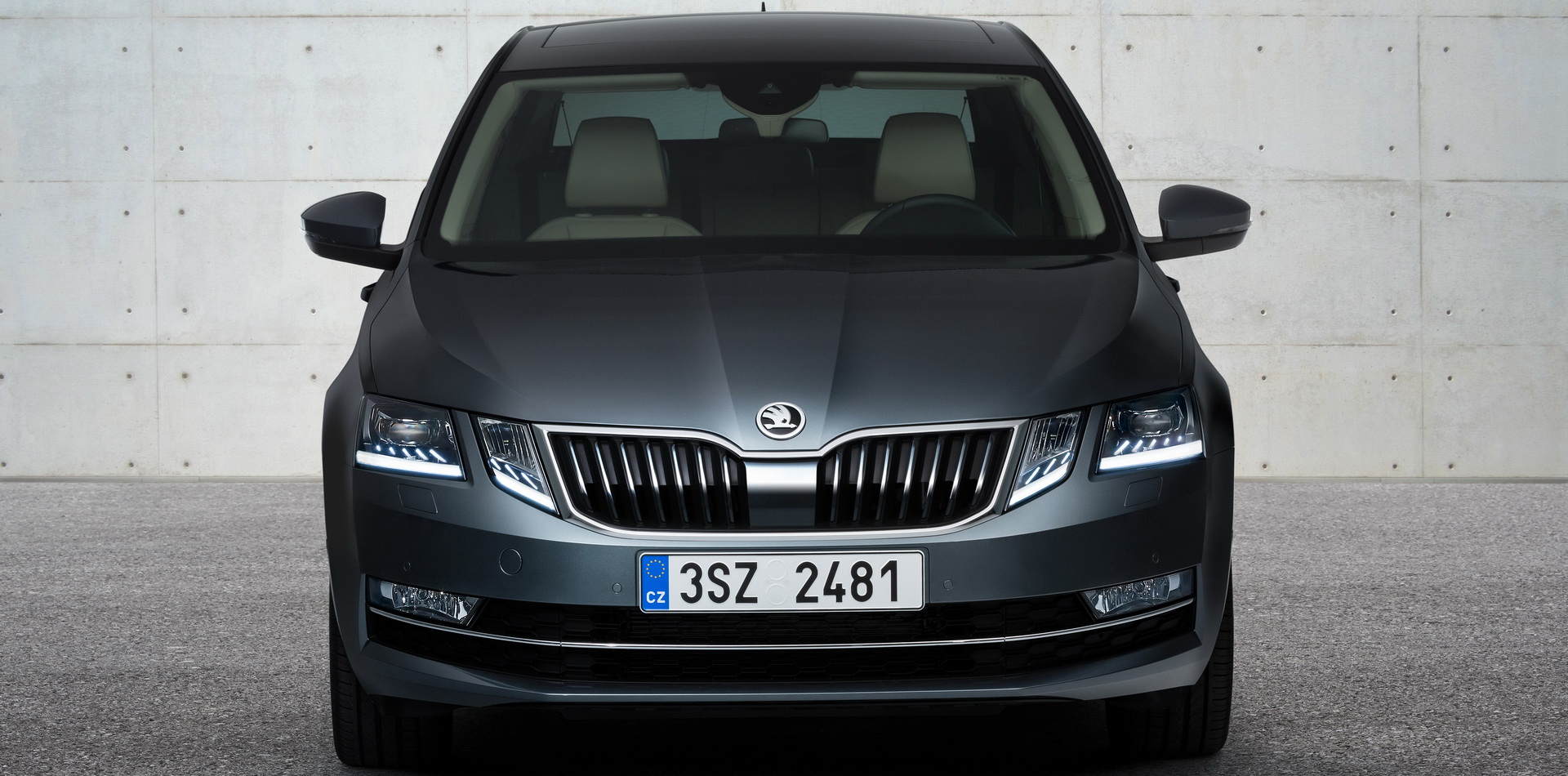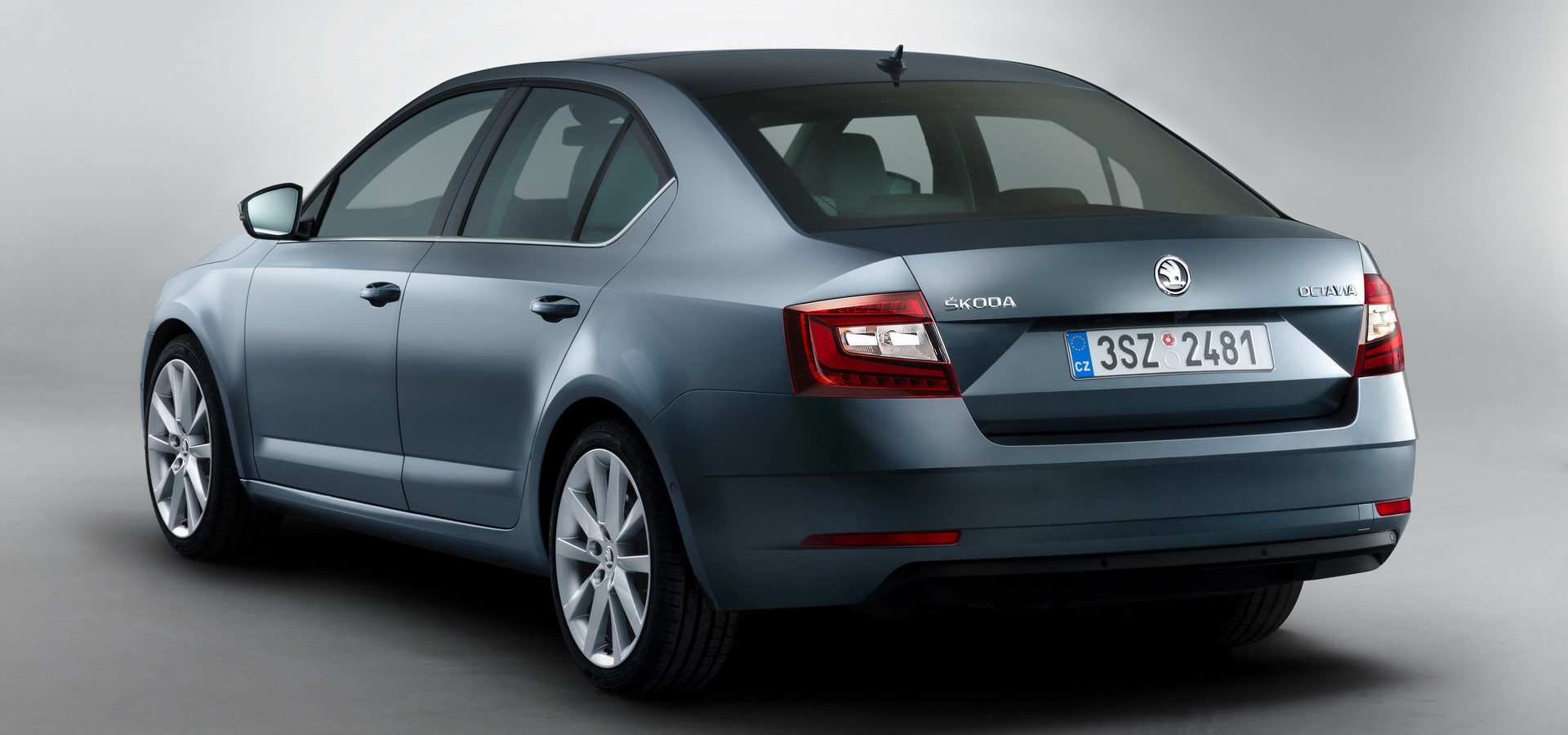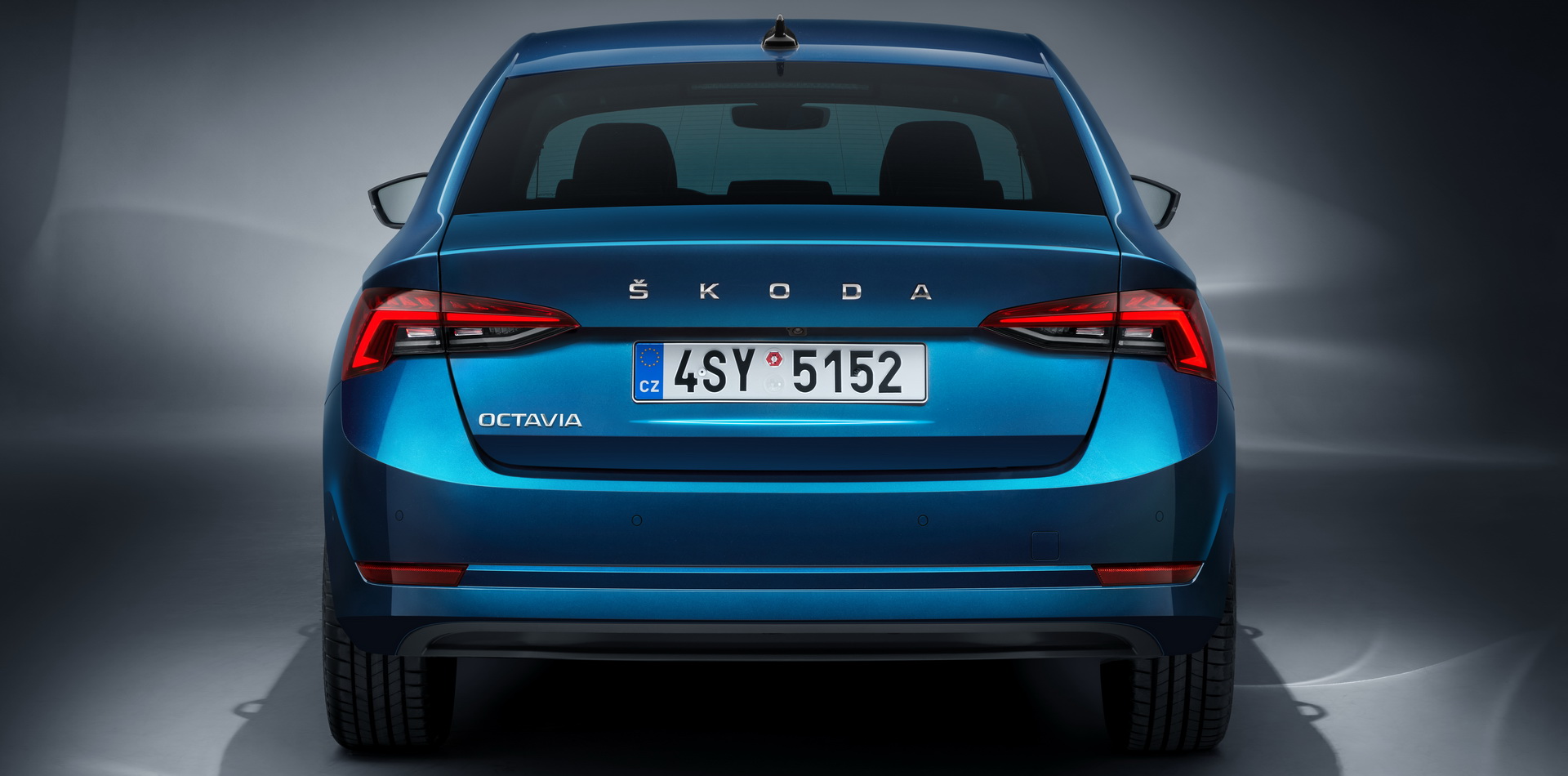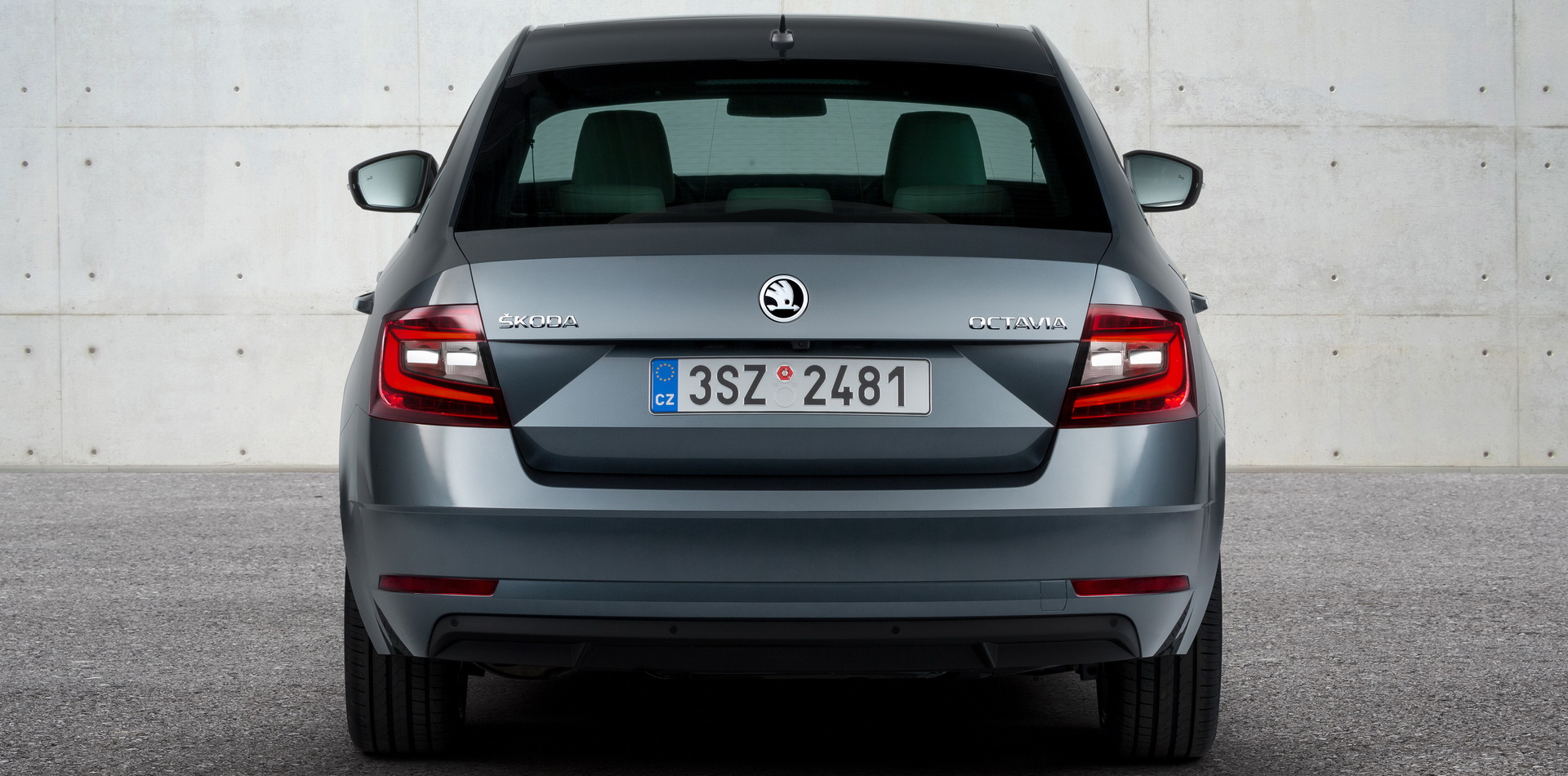Skoda is apparently done playing the “wholesome quiet Eastern European carmaker” and is now interested in disrupting the non-premium compact sedan segment with a…more premium fourth-generation Octavia.
And yes, while technically the Octavia is a liftback, its main rivals have always been the likes of the VW Jetta, Ford Focus Sedan, Renault Megane Sedan, Honda Civic Sedan, Mazda3 Sedan, Toyota Corolla Sedan – well, you get the picture.
It is only by placing the two generations side by side that we notice just how much of a departure this is for the Octavia in terms of design, mostly because this nameplate has always been so conservative and hardly ever stood out because of its looks.
Out with the old
Based on the VW Group’s MQB platform, the new Octavia is now more practical, more dynamic, more fuel efficient and straight up bigger than ever. It measures 186.6 inches (4.689 mm) in length, making it 0.8 inches (19 mm) longer than the third-gen model. Meanwhile, width has been increased by 0.6 inches (15 mm), and the wheelbase by 0.2 inches (5 mm).
The trunk volume is now 21.2 cu-ft (600 liters) in the 5-door version and 22.6 cu-ft (640 liters) in the wagon – improving on the older model by 0.4 (10 liters) and 1.1 cu-ft (30 liters) respectively.
Visually, the new car takes after its larger sibling, the Superb. This is good because the design language used on the third-gen Octavia was probably settled on before the turn of this decade. Also, the nose job applied to the updated 3rd-gen model didn’t do much to help its styling – those split headlights split a lot of opinions, pun intended.
Also read: 2020 VW Golf Vs. 2019 Ford Focus – These Bitter Compact Rivals Couldn’t Be More Different
In a nutshell, the 2020 Octavia simply looks more intricate from every angle, and every single one of its lines is more pronounced. As for the front and rear ends, they were completely redesigned and actually differ from what we see on the Superb.
A total revolution
In 2017, Skoda updated the Octavia bumper to bumper, giving it new infotainment systems, where higher grades even came with large 9.2-inch displays, WLAN hotspot, a SIM card module and a wide range of active safety tech: Predictive Pedestrian Protection for the Front Assist, optimized Parking Assistant, Blind Spot Detection, Rear Traffic Alert, Rear Radar and so on.
This new model though is taking things to a whole different level. For starters, the design of the dashboard is not only a complete departure from what was inside the old car’s cabin, but is also unlike anything we’ve ever seen in any Skoda product, including the current Superb.
We’re looking at a minimalist design with all the physical buttons clumped together either on the steering wheel, above the air vents and in one or two other places. The two-spoke steering wheel is a nice touch and if this type of design is good enough for a Mercedes S-Class, then it is definitely good enough for the Golf’s Czech cousin.
Features include ambient lighting, a head up display and some proper semi-autonomous tech such as the new Collision Avoidance Assist system, Turn Assist, Exit Warning, plus an updated version of Skoda’s Adaptive Cruise Control, now dubbed Predictive Cruise Control.
Plug and charge
The 2020 Octavia is for the first time available as a plug-in hybrid variant (Octavia iV). It utilizes a 1.4-liter gasoline engine and an electric motor for a total output of 201 HP (204 PS) and 258 lb-ft (350 Nm) of torque. Meanwhile, the 13 kWh battery generates a range of up to 34 miles (55 km).
Customers can otherwise choose between a wide range of gasoline and diesel options, the fastest one (for the moment) being the 2.0 TSI DSG 4×4 with its 187 HP (190 PS) and 236 lb-ft (320 Nm) of torque. It can accelerate from zero to 62 mph (100 km/h) in 6.9 seconds. The 2.0 TDI diesel DSG 4×4 with its 197 HP (200 PS) and 295 lb-ft (400 Nm) of torque will get there in 7.1 seconds.
In comparison, the old 2.0 TSI version needed 7.3 seconds to get to 62 mph, and had the exact same power and torque figures. Also, the flagship diesel version is now quicker than the old Octavia RS TDI, which had 181 HP (184 PS) and 280 lb-ft (380 Nm) and could only muster a 7.6 second sprint – half a second slower.
Meet your new company fleet car
Usually, when we do comparison pieces, there are at least some arguments to be made in favor of older models. For example, carmakers can be caught trying too hard when it comes to styling, although in most cases we tend to come around once we get used to new designs.
In this case though, we might as well call it in favor of the new Octavia right now and be done with it. According to Skoda, it’s better than the 3rd-gen model in every conceivable way, and we’re not going to disagree.




